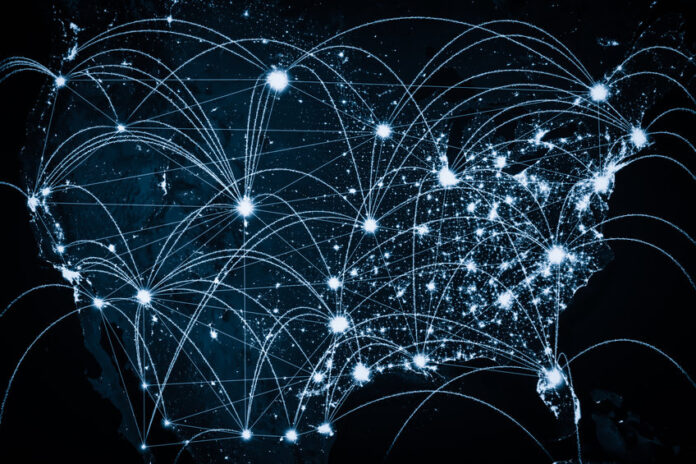As the U.S. federal government pours billions of dollars into broadband deployment and adoption, it is also trying to get a better handle on coordination and tracking of those efforts across disparate agencies with different funding mechanisms and program requirements.
A new report from the National Telecommunications and Information Administration focuses on reporting across all of those broadband efforts, and it also gives a glimpse of the massive amount of federal funding that is still working its way into the market.
According to the report, when funding is broken down among the categories of having been paid out, having funding that must be disbursed or having funding that has been appropriated, the federal broadband effort in FY 2021 was reflected as:
-There has been $6.7 billion outlaid across 37 programs, among nine agencies.
-10 agencies have $8 billion in funds that must be disbursed.
-Another $13.5 billion has been appropriated across 10 programs in four agencies, during fiscal year 2021.
Those numbers give a view into the federal funding pipeline that is ramping up, particularly as the Broadband Equity, Access, and Deployment program funds begin to be awarded to states and that money is spent over the next few years. During fiscal year 2021, federal appropriated funding investments in broadband increased “substantially”, and were up nearly 700% from the previous year’s funding. That translates to an increase of nearly $12 billion. The NTIA report said this was a “a direct result of the investments in broadband established under the Consolidated Appropriations Act, 2021, and will continue to grow with the passage of the Bipartisan Infrastructure Law (BIL)”, which allocated $65 billion for broadband. Those allocations will trickle through into agency awards and actual spending over the coming years.
Among the NTIA report findings:
-NTIA has put together a “foundational” model for assessing the economic impacts of broadband. The agency said that early inputs into the model estimate that broadband investments could add $140 billion to the rural U.S. economy and improve small business survival rates by 30%, based on figures from studies by the U.S. Chamber of Commerce and Deloitte.
-Survey-based estimates of benefits of broadband at the individual household level put the annual economic benefits at about $2,000 per year in 2022 dollars, as people can access a greater range of a wider range of product and services that could save them money, as well as higher home values associated with properties with higher-speed internet access.
-Federal agencies are working on more consistency on reporting and data-sharing requirements across the government when it comes to broadband, with a particular focus on the new broadband coverage maps from the Federal Communications Commission as well as a new funding map that outlines the geographic footprint of broadband projects that have been federally funded. The report detailed some of these efforts, including the fact that NTIA is “exploring an agreement with the Census Bureau to create annual estimates of broadband access and adoption for all Census tracts.”
-However, it’s a challenging task to take stock of all of the federal efforts that directly or indirectly relate to broadband deployment. “There is significant variation in the types of programs that fund broadband, how those programs define ‘connection’ to broadband,
and how agencies collect programmatic data related to broadband outcomes,” the report notes, going on to add: “Some programs are broadband specific, while other programs have broadband as one of many eligible expenses. For programs where broadband is one of many eligible expenses, in many cases agencies do not have mechanisms to determine how much of that funding went specifically to broadband.” And many agencies don’t have the human resources or technical capabilities in place to handle new types of data requests or reporting. There is also a significant “time lag” factor between when funds come into play and when the impacts of such spending can be assessed—it takes time to deploy infrastructure, and even longer to pinpoint availability, adoption and resulting economic impacts.
-For broadband-specific programs, the Federal Communications Commission, the U.S. Department of Agriculture and NTIA account for the largest amount of appropriated funding in FY 2021. The Department of Treasury also has a significant amount of infrastructure funding which could be used for broadband projects but is technically multi-use funding.
-The FCC has 19 broadband-specific programs with $10.6 billion in appropriations, $7.6 billion in obligations, and $6.3 billion paid out in the last fiscal year. The largest of these in terms of dollar figures was the Emergency Connectivity Fund, followed by the Emergency Broadband Benefit Fund and then its E-Rate program.
-NTIA is administering eight broadband programs, the funding for which was in the “appropriated” stage during FY 2021.
-USDA reported having five broadband-specific programs with $1.4 billion appropriated, $426.3 million obligated and $270.5 million paid out during the last fiscal year.
-The U.S. Department of the Interior, the independent federal agency called the Denali Commission (which focuses solely on rural and Native Alaskan communities), the U.S. Department of Education and the U.S. Department of Housing and Urban Development, as well as a number of other federal or regional-federal agencies, indicated that they are running programs that are either broadband-specific or general funding for which broadband projects are eligible.
-In terms of disbursements to states, the report said that Alaska saw the highest outlays for infrastructure deployment at $104.3 million, followed by Minnesota at $94.2 million and then Texas at $92.5 million. California had the highest amount paid out to support digital inclusion or adoption, at $524.2 million, and was followed by Alaska at $421.8 million and then Texas at $408.8 million. For federal funding that was paid out for planning, data and mapping, Alaska also saw the highest figure at $1.2 million; in second place was Maryland at $960,000, followed by California at $930,300.
For more detail from the report, as well as a dashboard of its highlights, head here.

